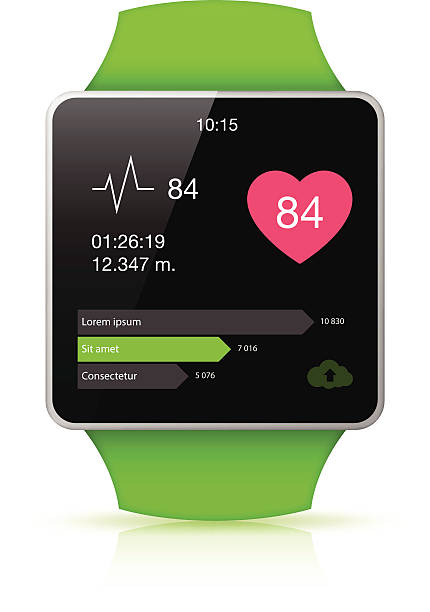AI transforms smartwatch ECG signals into a diagnostic tool for heart failure

Technology is at new heights each day. A study published in Nature Medicine showed the ability of a smartwatch ECG to detect accurate heart failure specifically in the non-clinical environment.
Keywords: AI, ECG, heart pump, diagnosis, single-lead ECGs, low ejection fraction
Researchers applied AI to Apple watch ECG recordings for identifying patients with weak heart pumps. The participants involved in the study recorded their smartwatch ECGs wherever and whenever they wanted. Periodically, the participants uploaded the ECGs to their health records securely via a smartphone app by Mayo Clinic for Digital Health.
Dr. Paul Friedman the senior author of the study, M.D., chair of the Department of Cardiovascular Medicine at Mayo Clinic in Rochester said, "Currently, we diagnose ventricular dysfunction -- a weak heart pump -- through an echocardiogram, CT scan or an MRI, but these are expensive, time-consuming and at times inaccessible. The ability to diagnose a weak heart pump remotely, from an ECG that a person records using a consumer device, such as a smartwatch, allows a timely identification of this potentially life-threatening disease at massive scale".
It is not necessary that people with a weak heart pump may be symptomatic. But this common heart disease affects about 2% of the population and 9% of the people over 60. When the heart is unable to pump oxygen-rich blood, then the symptoms such as shortness of breath, a rapid heart rate, and swelling in the legs may develop. For curing the disease early diagnosis is always the key. The same is the case with the diagnosis of heart disease. Early diagnosis helps in increasing the quality of life by providing numerous treatments thereby reducing the risk of death.

The 12-lead algorithm for low ventricular ejection fraction is licensed to Anumana Inc., an AI-driven health technology company, co-created by nference and Mayo Clinic. This algorithm is now modified and used by the Mayo researchers to interpret Apple Watch single-lead ECGs. The modified AI algorithm using single-lead ECG data had an area under the curve of 0.88 for detecting a weak heart pump. Compared to the medical treadmill diagnostic test, it is more accurate.
The first author of the study, Zachi Attia, Ph.D., the lead AI scientist in the Department of Cardiovascular Medicine at Mayo Clinic said, "These data are encouraging because they show that digital tools allow convenient, inexpensive, scalable screening for important conditions. Through technology, we can remotely gather useful information about a patient's heart in an accessible way that can meet the needs of people where they are".
Bradley Leibovich, M.D., the medical director for the Mayo Clinic Center for Digital Health, and co-author of the study said, "Building the capability to ingest data from wearable consumer electronics and provide analytic capabilities to prevent disease or improve health remotely in the manner demonstrated by this study can revolutionize health care. Solutions like this not only enable prediction and prevention of problems but also will eventually help diminish health disparities and the burden on health systems and clinicians".
The study involved 2,454 participants. The participants were Mayo patients from across the U.S. and 11 other countries. Between August 2021 and February 2022, more than 125,000 participants logged previous and new Apple Watch ECGs to their electronic health records. Clinicians had access to view all the ECG data on an AI dashboard that was built into the electronic health record. It also included the day and time it was recorded.
The study showed that approximately 420 participants had an echocardiogram (a standard test that uses sound waves to produce images of the heart ). They had this test within 30 days of logging an Apple Watch ECG in the app. The echocardiogram confirmed that 16 patients out of 420 had low ejection fraction. This provided a comparison for accuracy.
Story Source:
Materials provided by Mayo Clinic. The original text of this story is licensed under a Creative Commons License. Note: Content may be edited for style and length.
Journal Reference:
- Zachi I. Attia, David M. Harmon, Jennifer Dugan, Lukas Manka, Francisco Lopez-Jimenez, Amir Lerman, Konstantinos C. Siontis, Peter A. Noseworthy, Xiaoxi Yao, Eric W. Klavetter, John D. Halamka, Samuel J. Asirvatham, Rita Khan, Rickey E. Carter, Bradley C. Leibovich, Paul A. Friedman. Prospective evaluation of smartwatch-enabled detection of left ventricular dysfunction. Nature Medicine, 2022; DOI: 10.1038/s41591-022-02053-1
0 Comments